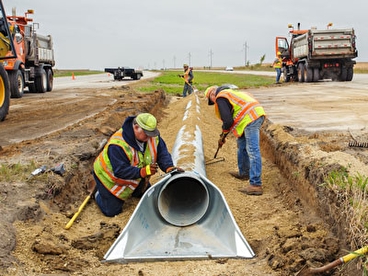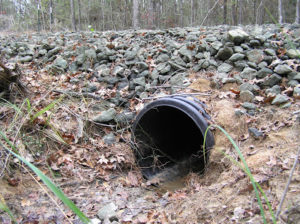Skilled Tree Removal for Home Safety
Wiki Article
Culvert Installment Facilitated: Step-by-Step Overview for Success
From choosing the suitable culvert dimension to integrating correct drainage actions, each action in the installation process plays a crucial role in the performance and longevity of the culvert system. Keep tuned to uncover the crucial actions and factors to consider that can make culvert installation a seamless and successful undertaking.Picking the Right Culvert Size
Selecting the proper culvert dimension is critical for ensuring effective water flow and architectural integrity in culvert setup tasks - Pad Construction. The dimension of the culvert straight influences the flow ability of water through the structure. A culvert that is too tiny can lead to flooding and overflow, while one that is as well big might result in reduced water rate, possibly creating sediment accumulation and blockagesTo establish the appropriate culvert size, elements such as the watershed area, optimal circulation prices, and hydraulic effectiveness need to be meticulously considered. Calculations based on these specifications aid in picking a size that can sufficiently manage the anticipated water quantity while decreasing the threat of blockages and structural failure.
It is important to get in touch with engineering guidelines and criteria to ensure that the picked culvert size meets the task needs and local policies (Pad Construction). By selecting the right culvert dimension, job supervisors can optimize water flow, protect against possible problems, and improve the total performance and durability of the culvert installment
Preparing the Setup Site
Efficient culvert installment demands precise prep work of the installment site to make sure optimal structural assistance and performance. Prior to beginning the installation procedure, it is vital to remove the website of any kind of particles, vegetation, or blockages that could restrain the culvert's positioning.In addition, it is very important to think about factors such as dirt make-up, groundwater degrees, and environmental influences when preparing the installment site. Conducting an extensive website analysis can help recognize any kind of potential challenges or risks that may affect the culvert's efficiency. By taking the time to prepare the setup site properly, you can aid ensure a successful culvert installation that fulfills architectural requirements and ensures long-lasting performance.
Putting the Culvert Appropriately

The grade at which the culvert is positioned is important for preserving an appropriate slope for water flow. A progressive slope helps protect against pooling and promotes reliable drainage. Additionally, the culvert ought to be oriented correctly to ensure that the click this link inlet and outlet remain in the proper places. This orientation is necessary for the culvert to function successfully in taking care of water flow.
Backfilling and Condensing the Soil
Correct backfilling and compaction of the soil around the culvert is crucial to guarantee stability and stop possible issues in the future. As soon as the culvert is properly placed, the following important action is to backfill the location around it with appropriate material. The backfill product should be without rocks, particles, and raw material to avoid damage to the culvert. It is recommended to utilize granular material such as sand or crushed rock for backfilling, as it gives great water drainage and compaction buildings.After putting the backfill material, it is essential to portable it in layers of uniform thickness. Using a compactor or a mechanical tamper, small the dirt carefully to prevent damaging the culvert. Compaction aids in minimizing the chances of negotiation and ensures consistent support around the culvert. It is essential to portable the soil evenly on all sides of the culvert to maintain its structural integrity.
Correct backfilling and compaction not only provide security to the culvert however also help in protecting against soil disintegration and preserving the long life of the culvert system.
Ensuring Proper Drain Integration
Integrating effective drain remedies plays a vital function in the overall performance and durability of culvert installations. Appropriate drainage integration is necessary for managing water circulation, avoiding disintegration, and making sure the architectural stability of the culvert system. To attain this, it is important to create a thorough water drainage plan that takes into consideration elements such as the quantity of water expected, the topography of the area, and the sort of soil existing.
In addition, integrating functions like disintegration control actions, such as riprap or plant life, can additionally improve the performance of the water drainage system. By carefully preparing and applying these drain solutions, culvert setups can this content work successfully and endure the examination of time.
Verdict
Finally, appropriate culvert installment is vital for keeping reliable drain systems. By click to investigate selecting the right culvert size, preparing the installment site, putting the culvert properly, backfilling and condensing the soil, and making certain proper drain integration, success can be achieved. Complying with these steps will certainly aid make certain the longevity and performance of the culvert, ultimately contributing to the overall success of the water drainage system.Report this wiki page